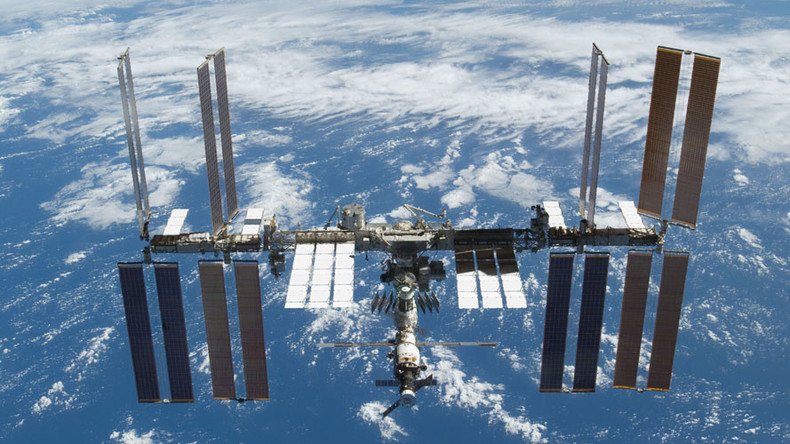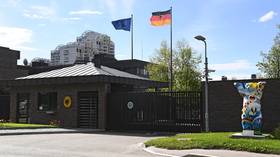Gecko-legged microbots may crawl over ISS to detect faults

Miniature robots, which would be capable of crawling on the outer surface of spacecraft thanks to gecko-like adhesive legs, are being developed in Russia.
At the moment, the microbot platform hardly looks impressive or futuristic. It is basically a rectangular fragment of a regular silicon wafer covered with polyimide film, with eight ‘legs’ cut out in it. But the people behind it say it may become the go-to technology for inspecting hard-to-reach places in extreme environments, like that of low Earth orbit.
The microbot’s legs move depending on the material’s temperature. When it gets cold, the leg bends at a ‘joint’ point, but once electric current is applied and heats the joint up, the leg stretches.
Each leg’s tilting ‘foot’ is also covered with a structure resembling that of a gecko's foot, which allows the microbot to stick to surfaces. This allows the device to traverse difficult surfaces, for instance, with coarse textures or irregularities. The foot can potentially be replaced with several individual ‘microlegs’ for better movement control.
Paired with a thermic deformation mechanism, the device can move up to 11mm per minute while carrying a load five times its own weight of 70 grams, says the developer, Russian Space Systems (RSS).
The simplistic design is meant to make it robust enough for operating in highly hostile environments. According to RSS, the microbot is rated for temperatures ranging between -200 Celsius and 200 Celsius, and is resistant to radiation and oxygen, which is present in low Earth orbit.
Another benefit is that making these microbots is fairly straightforward and easy to scale up.
“The entire platform is a multilayered piece produced similar to a microchip. The entire fabrication process requires no assembly,” said Igor Smirnov, head of RSS micromechanics department.
RSS says their crawler may be equipped with a variety of sensors. They are now in the process of developing payloads for their bots. The prototype is yet to be tested on the International Space Station.
RSS is a subsidiary of the Russian space agency Roscosmos, which combines several space-related research laboratories. Development of the crawler microbot began in 2008.












